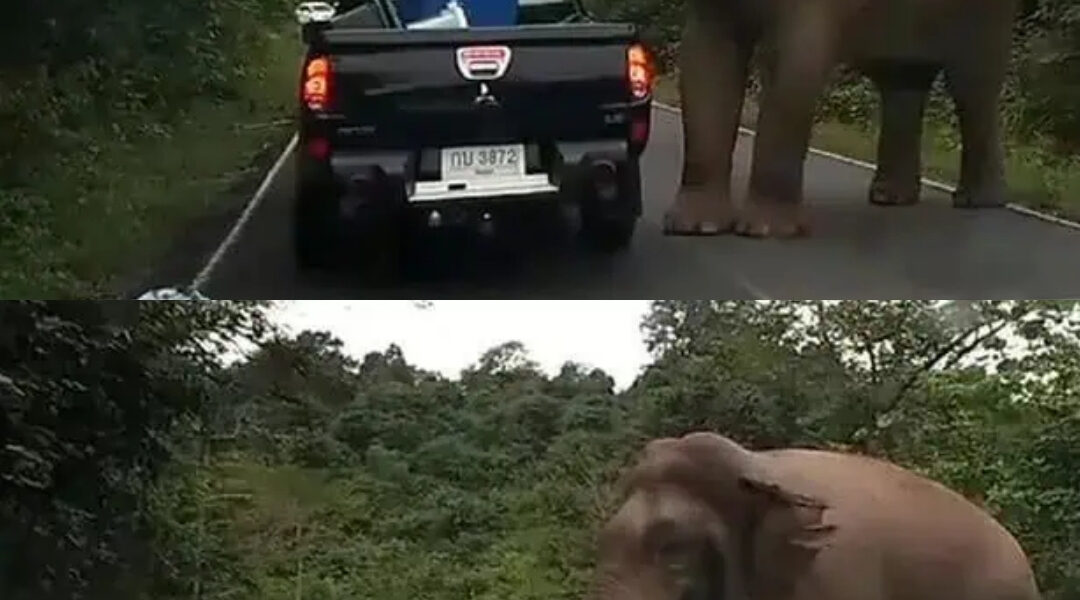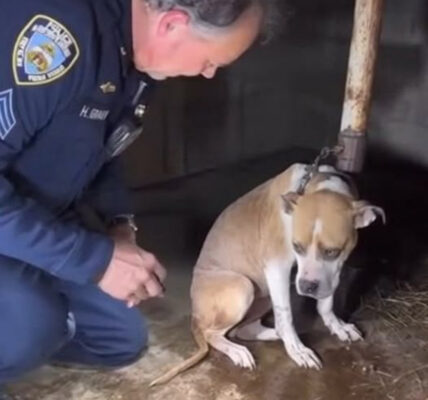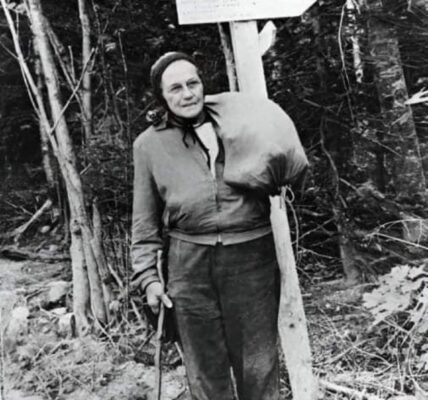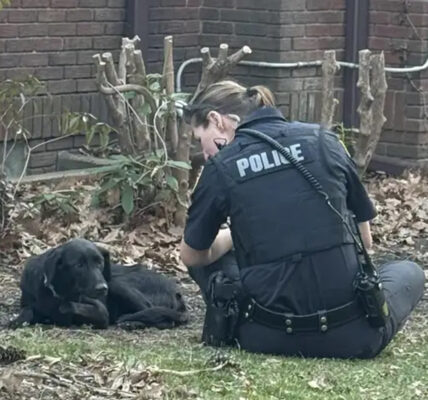It was meant to be a peaceful family drive through Khao Yai National Park, one of Thailand’s most beautiful sanctuaries — a place where lush forests, winding roads, and the songs of birds promise serenity. But for Wanlop Seeput, 35, and his family, that calm turned into heart-pounding chaos when they came face-to-face with one of nature’s largest — and hungriest — visitors.
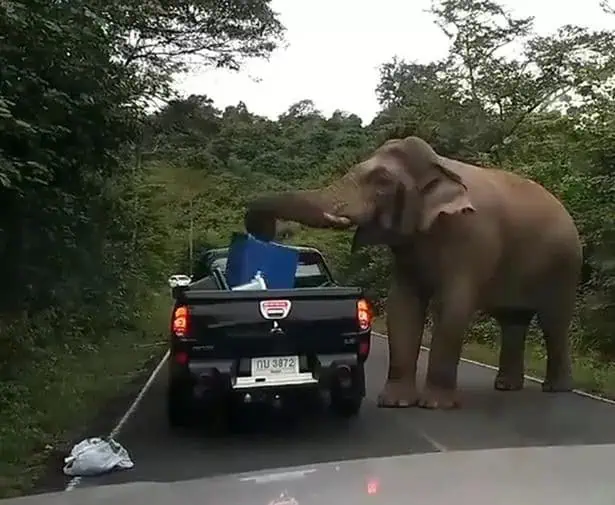
It happened on a quiet Sunday afternoon, around 2 p.m. The Seeput family had stopped on the roadside, watching as a massive male elephant emerged from the trees. Its tusks glinted in the sunlight, its great frame swaying gently as it lumbered toward the parked cars.
At first, it seemed harmless — curious, perhaps. But then, the elephant reached the first car in line, a black Mitsubishi pickup truck, and began to rummage. With astonishing dexterity, it used its trunk like a hand — prying open plastic boxes, sniffing at bags, tossing containers aside in search of food.
“He’s hungry,” someone whispered inside Wanlop’s car. “He’s looking for food. I hope he doesn’t get angry.”
The air grew thick with tension. The family dared not move. Cameras rolled quietly as the elephant finished with the pickup — and turned its attention toward them.
Slowly, it approached their vehicle. The heavy thud of its steps vibrated through the car. The Seeputs could see its reflection in the rear window — a towering shadow of power and instinct. Then, the great trunk reached up, brushing the back of the car, searching, sniffing, testing.

“I thought he was going to attack,” Wanlop recalled later. “My hands were shaking on the steering wheel. I couldn’t breathe. My wife kept saying, ‘Stay calm. Don’t move. Don’t make him angry.’”
For a long moment, time stood still — the family frozen, the elephant looming, the forest utterly silent except for the soft breath of the wild.
Then, just as suddenly as it had come, the elephant lost interest. With a low rumble, it turned away and wandered off toward another car further down the road — still on its quest for something to eat.
Only then did Wanlop exhale, starting the car and driving away slowly, his heart still pounding. They had escaped without a scratch, though their nerves were another story.
Later, reflecting on the encounter, Wanlop said, “He wasn’t angry — just hungry. He was following his instincts. We were just lucky to be in the right place at the right time.”
Forest officials later explained that elephants in the park have learned to associate vehicles with food. Visitors often bring fruits, snacks, and other items that attract the animals — a growing problem for both humans and wildlife.
Still, for those who watched that day, the scene was unforgettable — a gentle yet powerful reminder of how close the wild truly is. The image of that great elephant, towering over the tiny cars, was not one of malice, but of need — a majestic creature simply trying to survive in a world that’s shrinking around him.
And as the Seeput family drove away, the father glanced in the mirror one last time — watching the giant fade back into the trees, his hunger unsatisfied, his dignity untouched.
